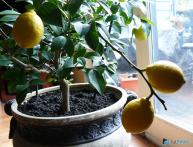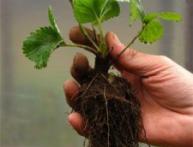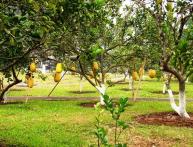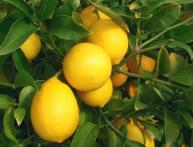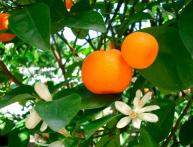How to germinate a mango seed indoors

Exotic fruits in supermarket baskets have not surprised anyone for a long time. Guests are surprised when they see exotic fruit plants on the windowsills of the owners’ house, for example, mango, grown from seed at home. It turns out that with a few rules, tips and recommendations, you can have tropics on your own windowsills.
Content:
- How to choose a mango in a store?
- How to prepare planting material - mango seed
- Planting and care
- Flowering and fruiting
How to choose a mango in a store?
The tropical fruit mango grows in the countries of Southeast Asia and differs in taste: there are fruits with sourness, and there are those with a slight pine note. But the choice of exotic fruit is the same for everyone. It should be a ripe mango, namely:
- Mango fruits of any variety should be equally soft over the entire surface.
- Choose brightly colored fruit
- The peel of the fruit should be smooth: wrinkles indicate its staleness. Any stains or traces of mold are unacceptable
- It is desirable that the mango has a pink, burgundy or red blush.
- If a fruit is selected for further seed planting, then you should pay attention to large fruits, since bone mangoes are not small.
- The aroma of the fruit should be floral, not necessarily strong - many varieties are practically odorless.
If the fruit was purchased in late spring or summer, then the chances of sprouting at the seed are very high, since this is the natural time of fruit ripening and they were practically not treated with preservatives.It may not be possible to choose a ripe fruit when purchasing, but you can choose a firm, whole mango with other properties as close as possible to the advice. The fruit should be placed in a warm, dry place and wait until it ripens.
How to prepare planting material - mango seed
Mago can be peeled in different ways, one of them is like potatoes, cutting off the skin over the entire surface. Then the mango must be carefully cut into two parts along the fruit, so as not to damage the seed. Further actions depend on the skills of the person who wants to grow a tree: plant it with a whole seed or remove the seed from the shell.
For cautious lovers of tropical plants. The obtained planting material must be placed in a glass jar with water for two weeks, but the water must be changed every day. For the last three days, the bone can be placed in a weak solution of potassium permanganate for disinfection.
For lovers of jewelry work. The extracted seed must be cleared of pulp and very carefully opened, freeing it from the shell and without damaging the seed. The procedure must be carried out immediately before landing.
Preparing the soil and pot
It is recommended to choose a tall pot for planting mangoes, with thick walls, a strong bottom and large drainage holes. A thick layer of drainage must be poured onto the bottom, and soil must be poured on top. A universal one is suitable for this plant, but you can also add a little clean peat and washed perlite for looseness - the mango tree loves well-drained soil. The surface should be watered with warm water with any root formation stimulator.
Planting and care
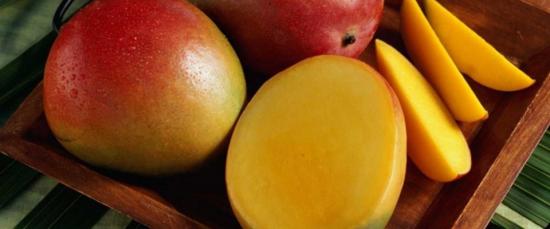
It is better to simply place a mango seed prepared in any way on the surface and sprinkle it with soil. It is recommended to organize a greenhouse above the pot.This can be a transparent plastic bag, you can cut a plastic bottle, or simply cover the pot with glass. We must not forget about ventilating any mini-greenhouse once every two days, otherwise the seed will rot. For better germination, it is better to place the pot in a bright, warm place.
In a month and a half, shoots should appear - even from one bones 2-3 sprouts may grow. Mango does not like the earthen clod to dry out, but excess moisture can destroy the plant. In addition to watering, in the warm season it is necessary to spray the leaves with warm water once a day.
The first month after germination, young plants are not fed with anything, but then to obtain beautiful glossy foliage, root and leaf feeding must be done.
The tree itself shows its needs - drooping, pale and wrinkled leaves indicate that it is time to generously water and feed the mango. In the cold season, the plant is fed once a month, and the rest of the time, when the tree is actively growing, fertilizing is carried out 3 times a month with organic fertilizer. If the tree grows at home, then it is very useful to wipe the leaves with beer - this will be both fertilizing and a kind of polish.
The mango tree loves space and light, so at least once a year in the spring the plant is transplanted into a larger pot with a complete replacement of the soil. In this case, it is necessary to handle the roots very carefully, since damage to the roots leads to the shedding of foliage. And it will take a long time for a new one to grow.
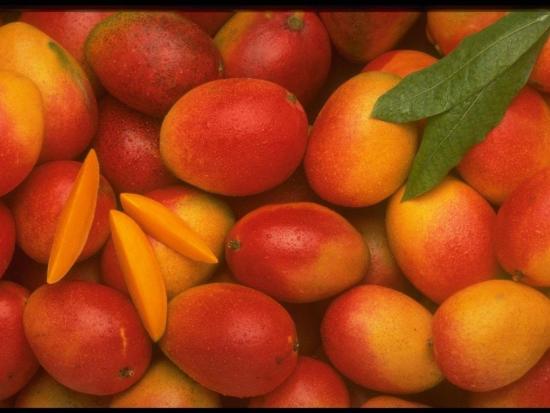
Mango from the seed grows up quickly, and besides transplants in the spring it requires the formation of a crown, otherwise a very tall tree will rest against the ceiling.To make a thick, beautiful plant, it is enough to pinch the branches and the top, and if necessary, trim the branches.
Flowering and fruiting
Experience shows that at home, seeded mangoes do not bear fruit. The tree can bloom in 5-10 years. It is very interesting to look at the flowering - the paniculate inflorescences consist of hundreds of flowers, usually male. It is difficult to pollinate them in natural conditions, but in an apartment it is simply impossible.
Therefore, the plant can bear fruit at home in exceptional cases. Professionals say that if you graft a mango that is already bearing fruit in the area onto a young mango tree, the chances of getting fruit increase dramatically.
You can graft a bud with a small amount of wood, you can graft a branch onto a two-year-old tree - the main thing is to find a fruit-bearing mature tree. If you are lucky and the tree still blooms and even bears fruit, then at this time watering cut back, and after it, abundant watering and fertilizing are resumed.
Mango is susceptible to the same diseases as most indoor and garden plants: spider mites, thrips, anthracosis, powdery mildew. You can fight diseases with the same means as usual.
Video on how to grow mangoes at home:



